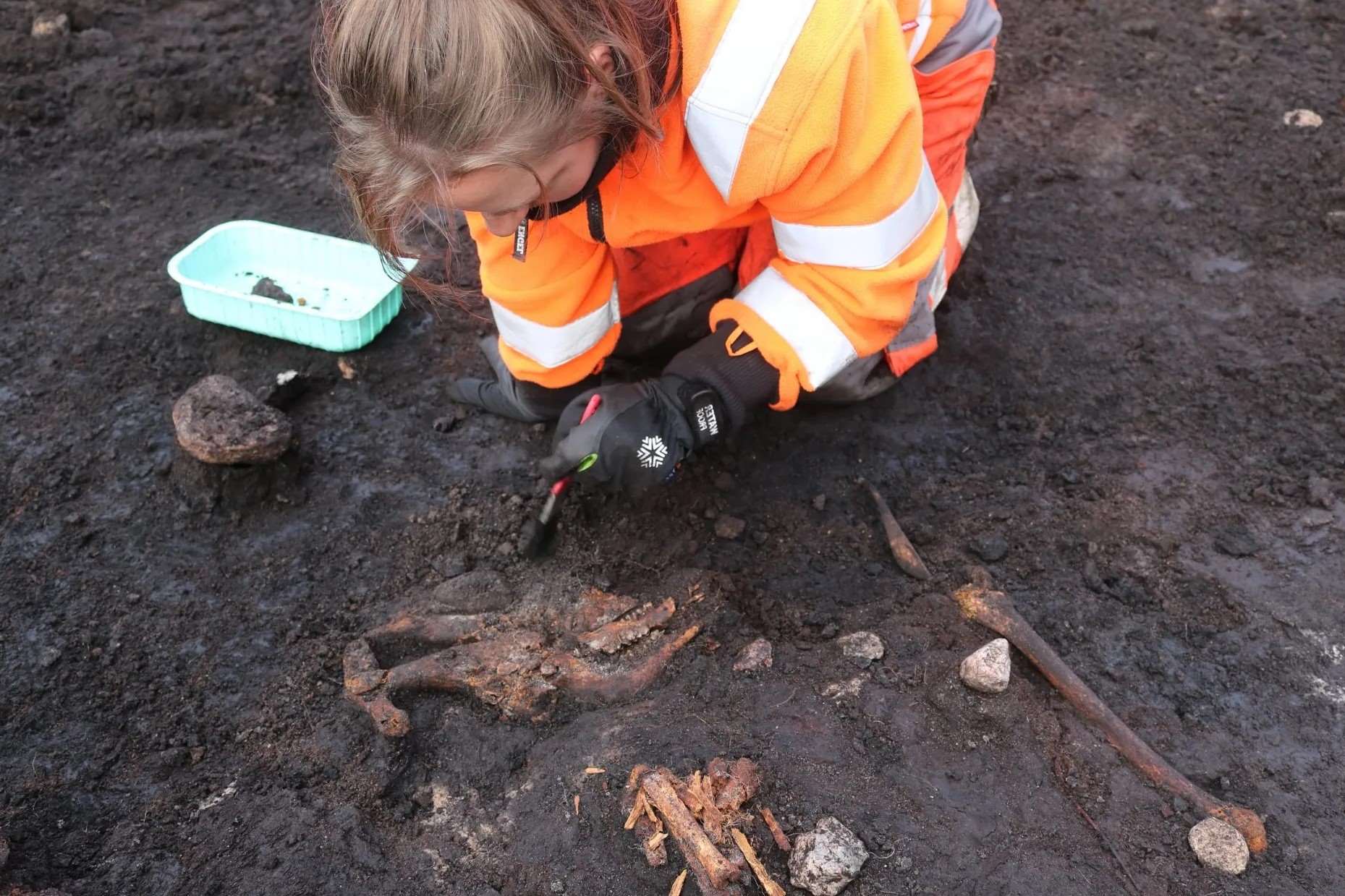
Ever wondered about the mysteries of ancient bog bodies? The Stenlose Bog Body is one of those fascinating finds that has captivated archaeologists and history buffs alike. Discovered in Denmark, this well-preserved body offers a unique glimpse into the past. But what makes the Stenlose Bog Body so special? For starters, the bog's unique conditions preserved not just the bones but also the skin, hair, and even clothing. This allows scientists to study details that are often lost to time. Want to know more? Let's dive into 34 intriguing facts about this ancient marvel, from its discovery to the secrets it holds about life thousands of years ago.
Key Takeaways:
- The Stenløse Bog Body, a 2,000-year-old discovery from Denmark, offers a fascinating glimpse into the Iron Age through its remarkable preservation and insights into ancient rituals.
- Through scientific analysis and ongoing research, the Stenløse Bog Body continues to captivate public interest and provide valuable information about the past, making it a valuable resource for understanding history.
Stenløse Bog Body: An Ancient Mystery
The Stenløse Bog Body is one of Denmark's most intriguing archaeological finds. Discovered in a peat bog, this ancient human remains offer a glimpse into the past. Here are some fascinating facts about this remarkable discovery.
Discovery and Preservation
The discovery and preservation of the Stenløse Bog Body are as fascinating as the body itself. Let's dive into the details.
- The Stenløse Bog Body was discovered in 1942 by peat cutters in Denmark.
- Peat bogs are known for their unique preservation properties, which helped keep the body in remarkable condition.
- The acidic environment of the bog, combined with low oxygen levels, prevented the usual decay processes.
- The body was found with its skin, hair, and even some internal organs intact.
- The preservation was so good that researchers could study the stomach contents to learn about the individual's last meal.
Age and Dating
Determining the age of the Stenløse Bog Body has provided valuable insights into the time period it came from.
- Radiocarbon dating places the Stenløse Bog Body around 2,000 years old.
- This dates the body to the early Iron Age, a period rich in cultural and technological advancements.
- The body is one of many bog bodies found in Northern Europe, all dating from similar time periods.
- The discovery has helped archaeologists understand more about the Iron Age in Denmark.
- The age of the body aligns with other significant historical events in the region.
Physical Characteristics
The physical characteristics of the Stenløse Bog Body reveal much about the individual's life and death.
- The body belonged to a male, estimated to be in his early 20s.
- He stood about 5 feet 7 inches tall, which was average for the time.
- His hair was well-preserved, showing a reddish-brown color due to the bog's acidic conditions.
- The skin had turned a dark brown, almost black, from the tannins in the peat.
- The body showed signs of a violent death, with evidence of strangulation and a blow to the head.
Cultural and Historical Context
Understanding the cultural and historical context of the Stenløse Bog Body provides a deeper appreciation of its significance.
- Bog bodies are often associated with ritualistic practices of the Iron Age.
- Some theories suggest these individuals were sacrificed to appease gods or spirits.
- The Stenløse Bog Body was found with a leather noose around its neck, indicating a possible ritual killing.
- The body was also placed in a specific position, which may have had symbolic meaning.
- The discovery has led to debates among historians about the nature of these rituals.
Scientific Studies and Analysis
Scientific studies and analysis have provided a wealth of information about the Stenløse Bog Body.
- DNA analysis has been conducted to learn more about the individual's ancestry.
- Isotope analysis of the teeth and bones has provided insights into the diet and migration patterns.
- Pollen analysis from the stomach contents has revealed details about the environment and season of death.
- The body has been X-rayed and CT-scanned to study the internal structures without causing damage.
- These studies have helped create a detailed picture of life during the Iron Age.
Public Interest and Display
The Stenløse Bog Body has captured public interest and is displayed in museums for educational purposes.
- The body is currently housed at the National Museum of Denmark in Copenhagen.
- It is one of the most popular exhibits, drawing visitors from around the world.
- The museum provides detailed information about the discovery, preservation, and significance of the body.
- Educational programs and interactive displays help visitors understand the historical context.
- The Stenløse Bog Body has also been featured in documentaries and books about bog bodies.
Ongoing Research and Discoveries
Ongoing research continues to uncover new information about the Stenløse Bog Body and its significance.
- New technologies and methods are being applied to study the body in greater detail.
- Researchers are comparing the Stenløse Bog Body with other bog bodies to identify patterns and differences.
- Collaborative efforts between archaeologists, historians, and scientists are leading to new discoveries.
- The Stenløse Bog Body remains a valuable resource for understanding the past and continues to intrigue researchers and the public alike.
Final Thoughts on Stenlose Bog Body
The Stenlose Bog Body offers a fascinating glimpse into ancient times. This well-preserved relic, found in Denmark, has provided invaluable insights into the lives of people from the Iron Age. The body’s condition, thanks to the unique properties of bogs, allows researchers to study everything from diet to clothing.
Understanding the significance of such discoveries helps us appreciate the advancements in archaeology and forensic science. These bodies are not just remnants of the past; they are storytellers, revealing secrets of ancient civilizations.
For anyone interested in history, the Stenlose Bog Body is a remarkable example of how nature can preserve human history. It’s a reminder of our connection to the past and the importance of preserving such finds for future generations. So next time you hear about a bog body, remember the incredible stories they hold within.
Frequently Asked Questions
Was this page helpful?
Our commitment to delivering trustworthy and engaging content is at the heart of what we do. Each fact on our site is contributed by real users like you, bringing a wealth of diverse insights and information. To ensure the highest standards of accuracy and reliability, our dedicated editors meticulously review each submission. This process guarantees that the facts we share are not only fascinating but also credible. Trust in our commitment to quality and authenticity as you explore and learn with us.


